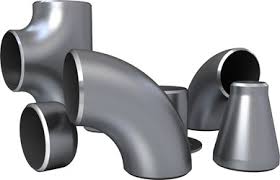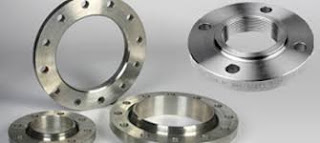Butt weld fittings
The meaning of Butt welds are welds
where two pieces of metals such as stainless steel, carbon steel, mild steel
are joined together. These types of welds require only some kind of
preparation and are used with thin sheet metals that can be welded with
a single pass. Common issues that can weaken a butt weld are the
entrapment of slag, excessive porosity, or cracking.
 |
| Butt weld fittings |
Five types of welded joints are butt joint, corner joint, lap joint, tee-joint and edge joint.
- Butt joint: In Butt welded type, the parts lie in the same plane and are joined at their edges.
- Corner joint: ...
- Lap joint: ...
- Tee-joint: ...
- Edge joint:
4 Popular Types of Welding Procedures
- Shielded Metal Arc Welding (SMAW) With this particular type of welding, the welder follows a manual process of stick welding. ...
- Gas Metal Arc Welding (GMAW/MIG) This style of welding is also referred to as Metal Inert Gas (MIG). ...
- Flux Cored Arc Welding (FCAW) ...
- Gas Tungsten Arc Gas Welding (GTAW/TIG)
The five basic weld joints include
the butt joint, the lap joint, the tee joint, the corner joint,
and the edge joint. ... The lap joint is formed when two pieces
are placed on top of each other overlapping each other for a given distance
along their edge
 |
| Butt weld fittings |
Butt weld meaning
Butt welding is a commonly used technique in welding that can either be automated or done by hand on steel pieces.[1] Butt welding can also be done with brazing for copper pieces. It is used to attach two pieces of metal together such as pipe, framework in factories, and also flanges.[1] A flange is something that either is internal or external that provided to strengthen a piece of material.[1] In factories butt welding has shown how economical it can be for companies to use when building things out of metal.[1] This is because if they wanted to make something out of metal without welding it together they would have to bend everything and reinforce the structure which costs more than welding the two pieces together.[1] Butt welding is accomplished by heating up two pieces of metal, or applying pressure, or doing both of those.[1] Penetration while welding the metal is important to maintain and with thin pieces of metal this is possible however, with thick pieces edge preparation may have to be done to prepare the metal.[1] Full penetration butt welds are made when they are in the within the parent(bigger, stronger) metal.[1] In butt welding the strongest welds will have the fewest imperfections. To achieve this the heat input is controlled, which decreases the size of the weld.[1] In commercial welding when this is done it also reduces cost but in order to maintain the strength of the weld double butt welds will be used.[1] In butt welding there are two types used to achieve the specific welds and then there are also a variety of joints considered to be butt joints.[1]Butt welding is best performed with MIG or TIG welding applications due to their natural ability to connect two pieces of metal together.[1] Using different types of welding electrodes for the welder will determine the properties of the weld such as its resistance against corrosion and strength.[1] Electrodes conduct current through the metal being welded in order join the two pieces.[1] The metal determines the type of welding that is required.[1] The electrodes are either heavily or lightly coated. For the heavily coated electrodes are commonly used in structural welding because they are much stronger and corrosion resistant.[1] The lightly coated electrodes are not as structurally sound.[1] Butt welding is performed with the Arc, TIG, or MIG welder held at a slight angle the weld if the weld is laying flat in order to achieve the least amount of porosity in the weld and also to increase the weld's strength.[1] Fillet welding make up about 80 percent of the connection despite being weaker that butt welds.[1] The reason it is used more often is because fillet welds offer more room for error with much larger tolerances. Fillet welding is not a type of butt weld despite its similarities.[1]
 |
| Butt weld fittings |
Butt weld fittings manufacturer
Manufacture across the globe are available for butt weld
fittings
Socket weld fittings
A Socket Weld is a pipe attachment detail in which a pipe is inserted into a recessed
area of a Valve, fitting or flange. In contrast to buttweld fittings
A Socket Weld is a pipe attachment
detail in which a pipe is inserted into a recessed area of a Valve, fitting
or flange. In contrast to buttweld fittings, Socket Weld fittings
are mainly used for small pipe diameters (Small Bore Piping); generally for
piping whose nominal diameter is NPS 2
Weld pipe fittings dimensions
BUTT WELDING PIPE FITTING DIMENSIONAL STANDARDANSI B-16.9 /16.28 / MSS SP-43
Butt weld fittings manufacturer in India
Manufactures are available in India for butt weld fittings
from Mumbai as well as rest of India.
Carbon steel butt weld fittings
Buttweld pipe fittings
comprises of long radius elbow, concentric reducer, eccentric reducers and Tees
etc. Butt weld stainless steel and carbon steel fittings
are an important part of industrial piping system to change direction, branch
off or to mechanically join equipment to the system
Forged fittings
Forging is a manufacturing process involving the shaping of metal using localized compressive forces. The blows are delivered with a hammer (often a power hammer) or a die. Forging is often classified according to the temperature at which it is performed: cold forging (a type of cold working), warm forging, or hot forging (a type of hot working). For the latter two, the metal is heated, usually in a forge. Forged parts can range in weight from less than a kilogram to hundreds of metric tons.[1][2] Forging has been done by smiths for millennia; the traditional products were kitchenware, hardware, hand tools, edged weapons, cymbals, and jewellery. Since the Industrial Revolution, forged parts are widely used in mechanisms and machines wherever a component requires high strength; such forgings usually require further processing (such as machining) to achieve a finished part. Today, forging is a major worldwide industry.[3]Butt weld fittings dimension
Butt Weld Fittings : ASTM A403 / ASME SA403 – B16.9 –
B16.28
Weld pipe fittings catalog
For Promotion Of Your
Company Write Your Requirements In The Comment Box And Our Business Manager
Will Assist You.
Thanks & Best
Regards
Samarpan Thorat
9029137339
(Marketing Manger -
India)9029137339


Comments
Post a Comment